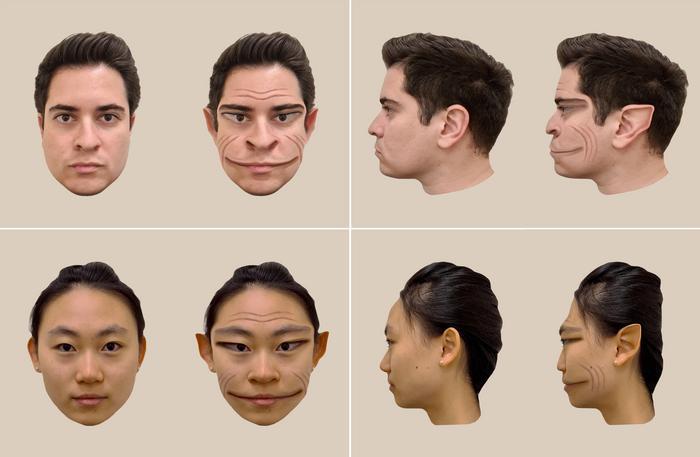Brain surgeons are increasingly operating without anesthesia. Thanks to directions from the patient, the surgeon knows where to cut. The risk of complications is thus smaller and the recovery is also faster.
An American musician who plays country music during brain surgery. While the surgeon cuts into his brain with a razor-sharp knife, he relaxed strums on his banjo. Science fiction? No. The video is on the internet. But also in the Netherlands more and more brain operations are taking place in which the patient remains aware. In the operating room of the Erasmus Medical Center in Rotterdam, anesthesiologist Markus Klimek has an entertaining conversation with a patient almost every week. About Feyenoord’s performance. Or about organic food. This happens while the neurosurgeon removes a brain tumor. A marriage proposal has even been made from the operating room. Not before or after, but during the operation.
The Erasmus Medical Center is the Dutch center for brain tumor operations without anesthesia, now known in the medical world as the ‘awake operation’. More than two hundred have been performed since 2002. Other hospitals in the Netherlands are also performing more and more brain surgeries in which the patient remains aware. Not for fun, but to prevent the surgeon from damaging important functions in the brain, such as speech or the musculoskeletal system. Awake surgeries are not only done on people with brain tumors, but sometimes also on epilepsy patients who do not respond to drugs.
Muscle white mass
Cutting into the brain without anesthesia is not new. “That already happened in the 19th century,” says neurosurgeon Arnoud Vincent of the Erasmus Medical Center. “It doesn’t hurt, because the brain has no pain receptors. But opening the skull is extremely painful. That’s why they stopped cutting without anesthesia when anesthesia techniques got better.”
Why has it been picked up again? “Removing a brain tumor is a delicate matter,” explains Vincent. “The more tumor tissue you remove, the better. But sometimes important brain functions lie close to the tumor. When you operate on someone under anesthesia, you always think: I just hope he doesn’t come out paralyzed.”
When Vincent opens a skull, he sees a stark white mass. There are all kinds of nerves running through it that he cannot see. Where important brain functions are located, differs per person. Moreover, a tumor in the brain can move certain functions to another area. Using an MRI scan, the surgeon roughly knows where the important functions are, but not exactly. Vincent: “Cutting away a few millimeters too much can have far-reaching consequences: the patient becomes paralyzed or can develop speech disorders.”
That is why tumors in sensitive areas of the brain were not removed until recently. This certainly applied to benign tumors, which grow slowly and only become malignant later. With the technique of awake surgery, mainly developed in the United States, these can now be removed in time. Without major risks. Because the tumor does not get the chance to become malignant, the patient’s chances of survival increase.
Answering questions
During the opening and closing of the skull, the patient is given a sedation, which makes that part of the operation painless. In between he is awake. Vincent: “By giving the patient assignments – for example counting to ten or naming pictures – and at the same time stimulating the outside of the brain with electrical impulses, I can see on the monitor where the various functions are located.”
While the patient answers questions, Vincent maps out millimeter by millimeter where important functions are located. These places are indicated with numbered stickers. Vincent: “This way I can see exactly where I am not allowed to cut.”
For Vincent, the five to seven-hour operation is above all a wonderful example of surgical technique. “I know patients have their fears, but I don’t deal with that during surgery. That is the job of the anesthetist. I can now often completely remove tumors in sensitive areas. And thanks to this technique, we are also learning more about the brain.”
benign tumor
For the patient it is a completely different story. He is fully aware of how the surgeon removes a piece from his brain. “When I first heard about it, I thought it was quite scary,” says René Wisselaar (47). Still, he didn’t have to think twice to agree to the operation. Four and a half years ago, he was told he had a benign tumor in his head. Six months ago it turned out that the tumor had grown and could become life-threatening. Wisselaar: “The neurosurgeon did not want to operate because the tumor was close to my speech center. There was also a good chance that I would become paralyzed on one side. I have my own shipping company. I couldn’t imagine not being able to talk or walk anymore.”
Wisselaar continued his search and ended up with neurosurgeon Vincent, who did dare to have an operation. Wisselaar: “He explained that he could save that important area if I stayed conscious during the operation. I was so relieved.”
Wisselaar was given an extensive preliminary interview. “I was shown video footage and knew almost minute by minute what was going to happen. That reassured me. I was nervous just before the surgery. Then I surrendered.”
Five hours on a shelf
Almost everyone thinks awake surgery is a scary prospect, says anesthesiologist Markus Klimek. He was educated in Cologne and had several years of experience with such brain surgeries before introducing them at the Erasmus Medical Center. “I spend a lot of time preparing. With this I can largely take away the fear in the patient.”
Such a preliminary discussion is not only important for the patient. Klimek: “I want to speak to each patient personally before the operation, to make sure he can handle the operation. Laying dead still on a shelf for five hours with doctors and all kinds of devices around you requires quite a bit of self-discipline.”
He encourages his patients to express their questions and concerns beforehand. Klimek: “That is crucial. Especially with young men I often see that they want to look big. They hide their emotions. I notice this immediately on the operating table when I have temporarily switched off consciousness with a sedative. Then the subconscious comes up and they start fighting. The emotions must be processed before the patient gets on the operating table. Otherwise he cannot lie still.”
Patients are also given homework. “I had to learn to lie motionless on my side for hours,” says Hellen Geers (33). She underwent awake brain surgery five years ago for a benign brain tumor. “I also had to practice getting someone else to scratch when I got itchy.”
Klimek: “A small movement means a landslide for the surgeon.” Anyone who smokes is instructed not to stop just before the operation. “Smoking is taboo during abdominal surgery, but with me smokers have to light up a cigarette the morning before the surgery. Then the mucus remains calm during the operation and they do not cough. You should stop after the operation, I always say.
From minute to minute
Hellen Geers still vividly remembers how she felt the night before the operation. “The nerves were screaming through my throat: as long as I don’t have anything left.” The operation itself went well. “I kept counting to ten. At one point I stopped at eight. “So we can’t cut here,” said the surgeon. He had located the area where my speech function was.”
When she got over the initial shock, she actually found it a reassuring idea: “I was able to follow closely what was happening. I also had surgery on my knee. Then I just had to wait and see what the result would be. Now I had the feeling that by always answering questions, I was helping to ensure a good outcome.”
René Wisselaar also looks back with a good feeling. “I didn’t feel a dime of pain, but I did feel a kind of scraping in my head,” he says. “I was not afraid for a moment. I chatted extensively with Dr. Klimek. About my work, about the holidays. I believe we even talked about the salt trade, which I used to work in. The operation took seven hours, but it was over before I knew it.”
Itchy nose
Anesthesiologist Klimek experienced his first awake brain surgery as ‘science fiction live’. “But the results are very good. Patients also recover faster because they have not had an anesthetic.” However, he doesn’t want to tell a cheer story. “It remains a very drastic operation.” Of the two hundred awake operations that were performed in the Erasmus Medical Center, three did not go well. Klimek: “These people have suffered serious complications. Very unfortunate, but that risk is much greater if you give anesthesia.”
It is precisely the permanent contact with the patient that makes awake brain surgery fascinating for Klimek. During operations under anesthesia, he is like a pilot in a cockpit, monitoring the patient’s condition using all kinds of equipment. Klimek: “During these operations, I hear from the patient how he feels. I deal with all kinds of unpredictable things. The patient may cough, vomit or have an epileptic seizure: all things that should not happen.”
The trick is to keep in constant contact and put the patient at ease, he says. “If their nose is itchy, I’ll scratch. If someone is not feeling well, I will come with pillows. Or I give a massage.” In the preliminary interview, Klimek already explores what suitable topics are for discussion. “People relax when they talk about things they like. If I were to constantly ask if they feel anything, they are too preoccupied with the surgery. Then it takes forever.”
After two hundred operations, Klimek knows everything about Egyptian painting, organic farming and transporting road salt. “I like it all equally. Some anesthesiologists have chosen this profession because they don’t have to talk to patients,” he laughs. “I clearly don’t belong there.”
Optimistic
Hellen Geers was so happy when she was told after five hours that the tumor in her head had been completely removed. “I was handed a telephone and was allowed to call my family straight away. I remember exactly what I said: I have to hang up now, because my head still has to be closed.” Three days later she was allowed to go home and the following weekend she was already on the korfball field to encourage her nephew.
She couldn’t resume her work as a doctor’s assistant in a hospital: too tiring. “I’m sorry, but I’m alive! And I didn’t get anything serious from the surgery. The fact that I can just move and communicate is worth a lot to me. I help my sister, who has two small children, and I am active at a website of fellow sufferers of the Cancer Diagnosis Foundation. And I enjoy as much as I can.”
René Wisselaar is back at work in his own company three months after the operation. “I feel fine, I don’t have any problems,” he says cheerfully. 95 percent of the tumor is removed. Wisselaar: “That is much more than I had dared to hope for.” He gets radiation to destroy the last piece as well. “If I can do that, I won’t have to worry about anything for the next fifteen to twenty years. I am optimistic about the future. Should I ever need such an operation again, I will not hesitate for a moment.”
Sources):
- Plus Magazine
















